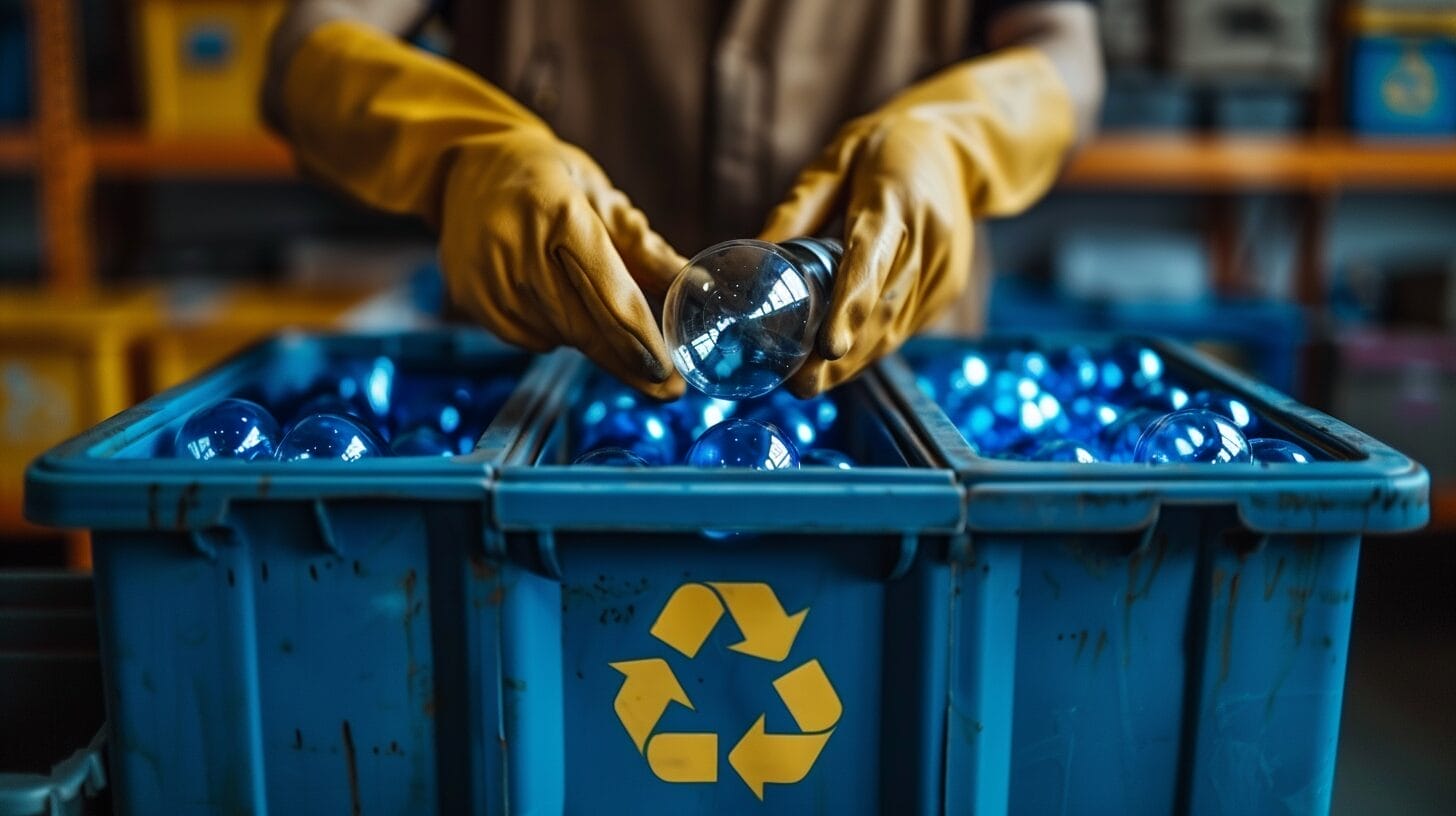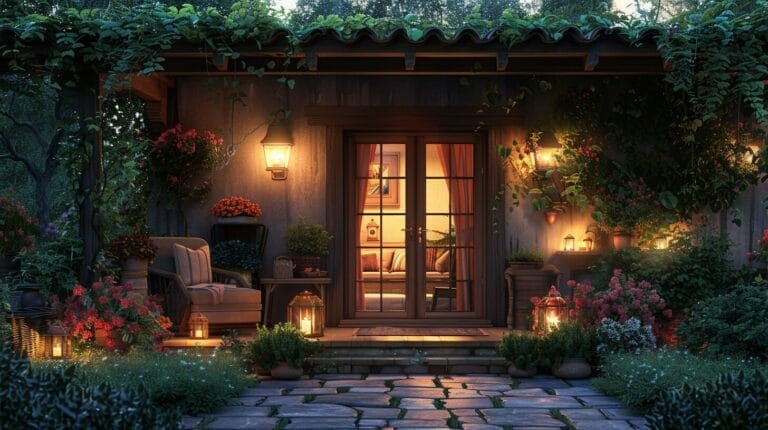Can You Throw Away Light Bulbs? Easy Disposal of Light Bulbs
Can you throw away light bulbs safely? Simplify the disposal of light bulbs with our easy guide. From understanding recycling options to safely disposing of different bulb types, we’ve got you covered. Say goodbye to confusion and hello to hassle-free disposal methods with our expert advice!
Key Takeaways
- Incandescent bulbs should be taken to recycling centers to prevent environmental harm.
- CFL and LED bulbs must be disposed of properly to avoid mercury contamination.
- Check local regulations for safe disposal guidelines for different types of bulbs.
- Retailers and recycling programs offer options for responsible disposal of light bulbs.
- Recycling programs are crucial for safe handling of all types of light bulbs.
Understanding Different Types of Light Bulbs and Their Environmental Impacts

Different types of light bulbs have varied impacts on the environment, primarily due to their lifespan and energy efficiency. CFLs are energy-efficient but contain mercury, which makes them hazardous if not disposed of correctly. LEDs, by contrast, do not contain mercury and are more environmentally friendly due to their longer lifespan and energy efficiency. It is crucial to recycle CFLs to prevent mercury pollution, and opting for LEDs can significantly reduce hazardous waste.
The Right Ways to Dispose of Incandescent Light Bulbs
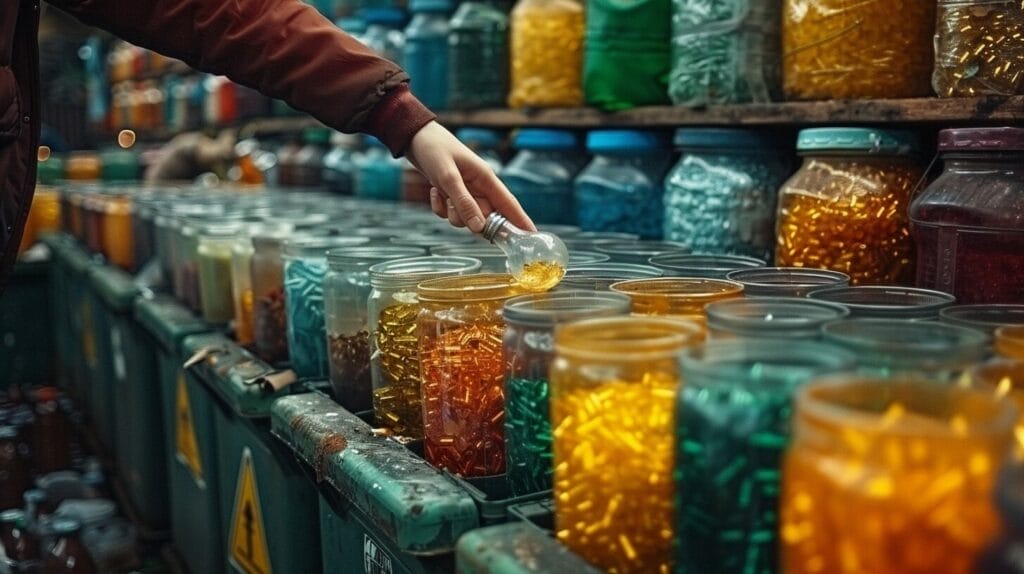
Incandescent bulbs, while not containing mercury, have components harmful to the environment if not properly disposed of. The best disposal method is recycling at local centers equipped to handle the materials within these bulbs. Some retailers also offer specific recycling programs. Always check local regulations for the most appropriate disposal methods to minimize environmental impact.
Proper Disposal Techniques for Energy-Saving CFL and LED Bulbs

Both CFL and LED bulbs must be disposed of correctly to minimize environmental harm and health risks associated with mercury. Recycling centers play a crucial role in this process, helping keep these bulbs out of landfills and preventing contamination of soil and water. Certain retailers provide convenient recycling drop-off points for used CFL and LED bulbs.
Dealing with Special Light Bulbs: Halogen Bulbs and Fluorescent Tubes
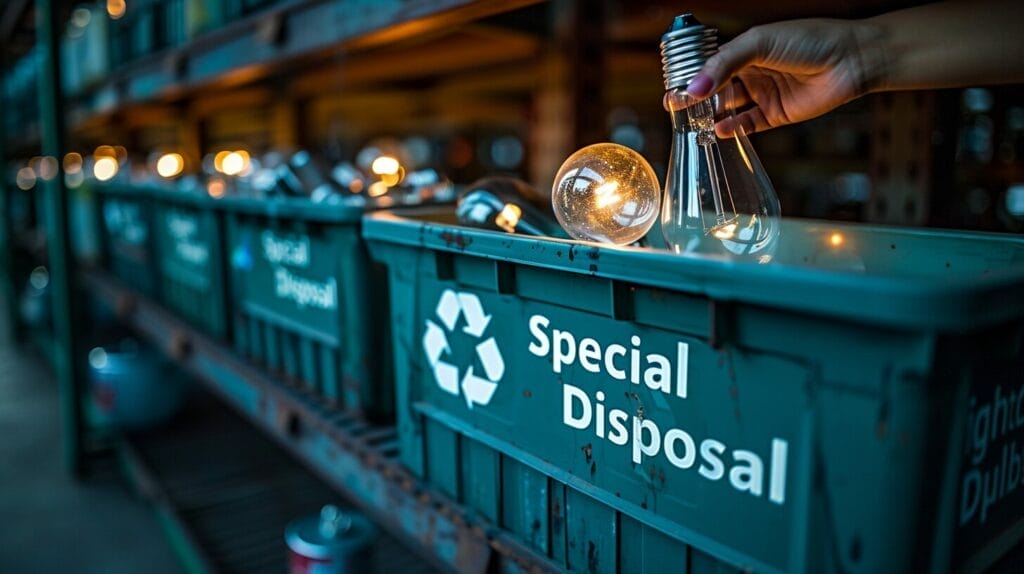
Recycling and safe disposal options are available for halogen bulbs and fluorescent tubes, addressing their unique disposal challenges effectively. When dealing with these special light bulbs, it’s important to handle them properly due to the presence of toxic chemicals like mercury vapor.
- High-Intensity Discharge Lamps: These bulbs contain toxic chemicals like mercury vapor and require special handling procedures to prevent environmental contamination.
- Fluorescent Tubes: These tubes, including compact fluorescent lights, pose a disposal challenge due to their mercury content. It’s essential to recycle them to prevent mercury from leaching into the environment.
- Halogen Bulbs: While not containing mercury, halogen bulbs should still be disposed of properly to prevent the release of other harmful substances. Recycling these bulbs is the best way to make sure they’re handled safely and sustainably.
The Future of Light Bulb Disposal: Innovations and Improvements
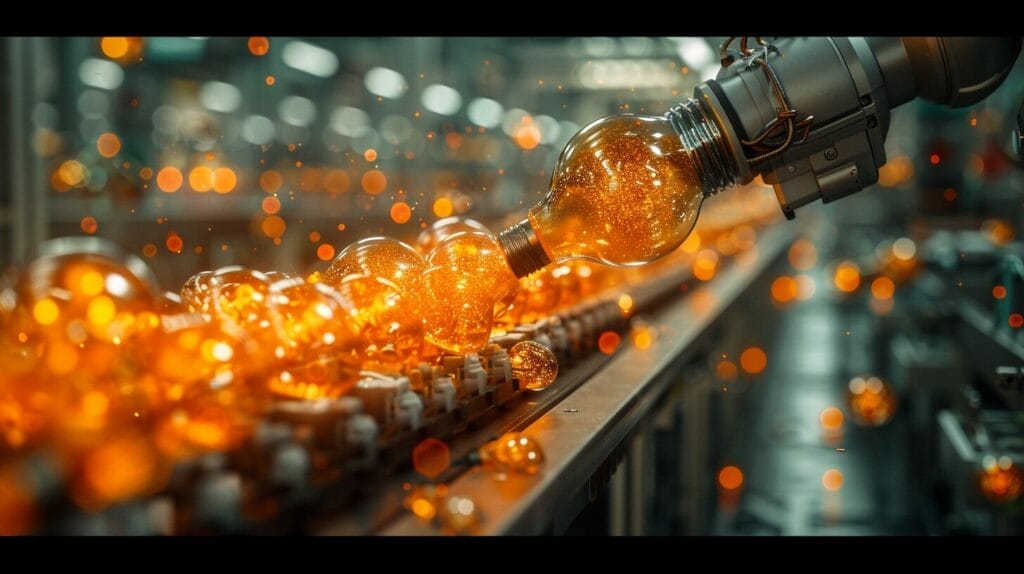
Looking forward, advancements in recycling technology and more stringent regulations will likely enhance the sustainability of light bulb disposal. Consumers play a critical role by choosing environmentally friendly disposal options. Innovations are making the recycling process more accessible and effective, promoting sustainable practices.
Conclusion
To sum up, it’s crucial to dispose of light bulbs properly to safeguard the environment and our health.
By comprehending the various types of light bulbs and employing the correct disposal methods, we can have a beneficial effect on our planet.
Let’s ensure to recycle or dispose of our light bulbs responsibly to establish a brighter and cleaner future for all.
Frequently Asked Questions
Can you throw away light bulbs in the regular trash?
Light bulbs that contain hazardous materials such as mercury, like CFLs, should not be thrown away in regular household trash. It is better to recycle them properly to prevent environmental harm.
How can I dispose of CFL bulbs?
You can take CFL bulbs to a local recycling center or a store that has a recycling program for fluorescent bulbs. Many home improvement stores like Home Depot also provide recycling services for CFLs.
What should I do if a light bulb breaks?
If a light bulb breaks, especially a CFL bulb, you should carefully clean up the area using gloves, duct tape to pick up any glass pieces, and a damp paper towel to wipe up any powder. Dispose of the broken bulb following proper hazardous waste disposal guidelines.
Are incandescent bulbs considered toxic waste?
Incandescent bulbs are not considered toxic waste as they do not contain hazardous materials like mercury. However, it is still recommended to recycle them whenever possible to reduce landfill waste.
Can halogen light bulbs be disposed of in the regular trash?
Halogen light bulbs should be disposed of properly and not in regular household trash. Check with your local recycling regulations or waste management services for the correct disposal methods.

